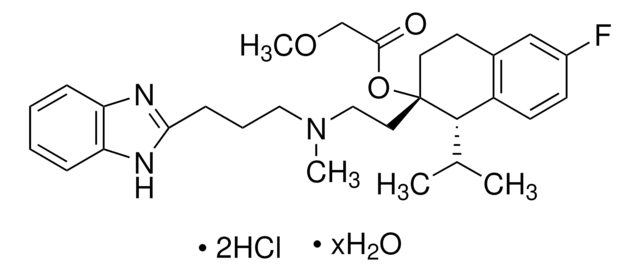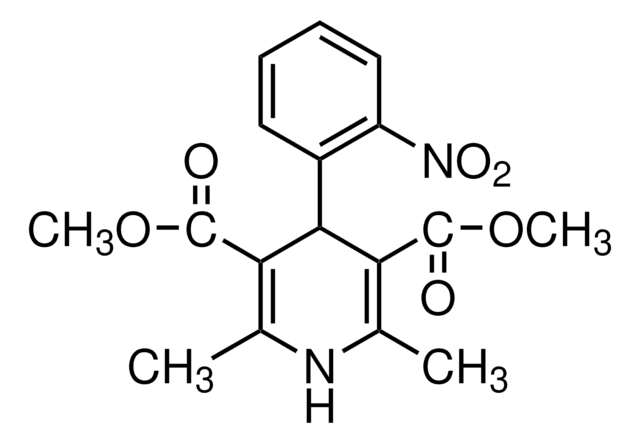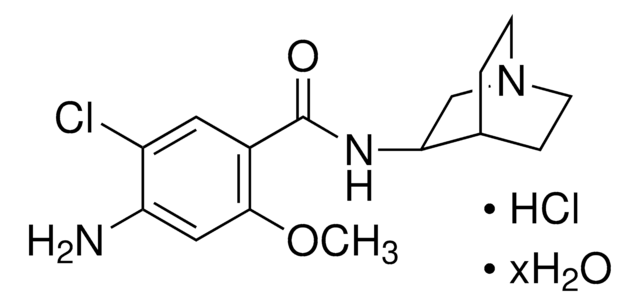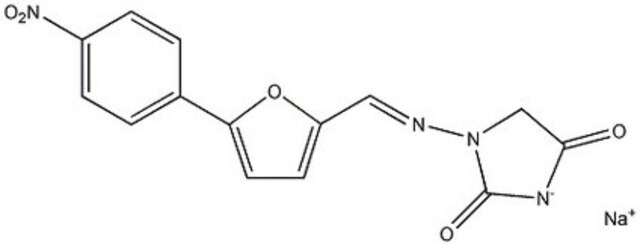C5488
Anti-Calcium Channel (α1G Subunit) (T-type Voltage-Gated Ca2+ Channel) antibody produced in rabbit
~1 mg/mL, fractionated antiserum, buffered aqueous solution
Sign Into View Organizational & Contract Pricing
All Photos(1)
About This Item
Recommended Products
biological source
rabbit
Quality Level
conjugate
unconjugated
antibody form
fractionated antiserum
antibody product type
primary antibodies
clone
polyclonal
form
buffered aqueous solution
species reactivity
mouse, rat, human
concentration
~1 mg/mL
technique(s)
western blot: 5-10 μg/mL
UniProt accession no.
shipped in
wet ice
storage temp.
−20°C
target post-translational modification
unmodified
Gene Information
human ... CACNA1G(8913)
mouse ... Cacna1g(12291)
rat ... Cacna1g(29717)
Specificity
The antibody specifically recognizes a splice variant of α1G.
Immunogen
synthetic peptide derived from the rat α1G calcium channel subunit conjugated to KLH.
Physical form
Solution in phosphate buffered saline containing 0.08% sodium azide.
Disclaimer
Unless otherwise stated in our catalog or other company documentation accompanying the product(s), our products are intended for research use only and are not to be used for any other purpose, which includes but is not limited to, unauthorized commercial uses, in vitro diagnostic uses, ex vivo or in vivo therapeutic uses or any type of consumption or application to humans or animals.
Not finding the right product?
Try our Product Selector Tool.
Storage Class
10 - Combustible liquids
wgk_germany
nwg
flash_point_f
Not applicable
flash_point_c
Not applicable
Choose from one of the most recent versions:
Already Own This Product?
Find documentation for the products that you have recently purchased in the Document Library.
Tsuyako Ohkubo et al.
International journal of oncology, 41(1), 267-275 (2012-04-04)
T-type voltage-gated Ca2+ channels have unique electrophysiological properties, suitable for generating Ca2+ oscillations and waves and thus controlling the proliferation of various tumor cells. In the present study, we investigated the role of Cav3.1, a candidate tumor suppressor gene, in
Our team of scientists has experience in all areas of research including Life Science, Material Science, Chemical Synthesis, Chromatography, Analytical and many others.
Contact Technical Service








